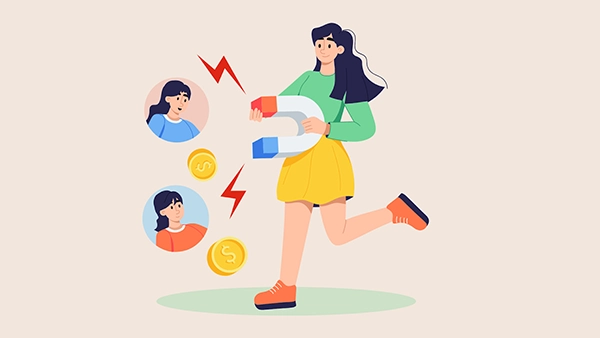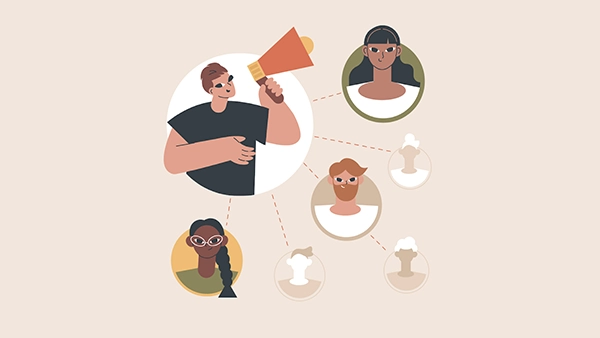
For decades, businesses have poured resources into acquiring new customers. Splashy ad campaigns, discounts, and endless outreach are designed to bring in fresh faces. While acquisition matters, an overlooked truth is that growth fueled primarily by new customers often burns out quickly. The real power lies in keeping the customers you already have. Retention is not only more affordable, it creates a foundation for stability, loyalty, and long-term profitability.
In today’s crowded markets, where consumers have more options and less patience, focusing solely on acquisition is like pouring water into a leaky bucket. Businesses that thrive over decades do so by holding onto their existing base. This article explores why retention consistently beats acquisition for long-term growth, backed by research, practical examples, and real-world strategies.
Acquisition refers to the process of attracting new customers. This could mean running digital ads, sponsoring events, or offering promotions to convince people to try your brand. Retention, on the other hand, focuses on keeping current customers engaged, satisfied, and loyal so they continue buying and recommending you to others.
The contrast is simple: acquisition fills the funnel, while retention prevents leaks. Without retention, every customer you gain eventually leaves, forcing you to spend more money acquiring replacements. With retention, each customer stays longer, spends more, and often attracts others through word of mouth.
The balance is important, but businesses that emphasize retention over acquisition build a stronger long-term growth engine.
Acquiring a new customer can cost five to seven times more than retaining an existing one. Every new acquisition requires marketing spend, onboarding efforts, and discounts to encourage the first purchase. Retention, meanwhile, leverages relationships you’ve already built.
Consider this: increasing customer retention rates by just 5% can increase profits by 25% to 95%, according to Bain & Company. This is because retained customers not only buy more often, but their average purchase size tends to grow over time.
Alex Vasylenko, Founder of Digital Business Card, explains, “Customer acquisition drains resources, while retention creates lasting value. Loyal customers cost far less to keep than acquiring new ones. Retention builds equity, as loyalty grows in ways acquisition can’t match.”
For example, subscription-based businesses like Netflix or Spotify depend on high retention. Their model thrives on customers staying month after month. Even in retail, where margins can be thin, loyal shoppers drive repeat sales without requiring additional marketing spend.
One of the most compelling arguments for retention is the concept of Customer Lifetime Value (CLV). CLV measures the total revenue a business can expect from a single customer throughout their relationship. High retention directly increases CLV.
Let’s take two scenarios. A company with low retention might gain a new customer who spends $100 once and never returns. Another with strong retention could gain a customer who spends $100 multiple times a year, every year, for a decade. The second company earns not just more revenue but also more predictability and stability.
Leigh McKenzie, Community Advocate at Traffic Think Tank, explains, “When retention falters, lifetime value crumbles, and every acquisition dollar loses power. Strong retention not only stretches CLV, it amplifies the impact of every campaign, turning growth into something sustainable.”
Retention compounds like interest. The longer a customer stays, the more value they generate. This compounding effect makes retention the true driver of sustainable growth.

Happy customers are natural brand ambassadors. When businesses retain customers by delivering excellent experiences, those customers often share their satisfaction with friends, family, and colleagues. Word of mouth remains one of the most trusted forms of marketing, and it’s free.
Research shows that people trust recommendations from peers far more than ads. A retained customer who refers others lowers your acquisition costs and expands your base organically. For example, companies like Dropbox and Airbnb grew rapidly not by massive ad budgets, but by encouraging referrals from satisfied users.
Retention creates a ripple effect: one happy customer can bring in several new ones, all without the heavy expense of traditional acquisition campaigns.
Customers are more than transactions. They’re people with emotions, preferences, and memories tied to your brand. Retention strategies that focus on building trust and connection foster emotional loyalty, which is harder to break than transactional loyalty.
Think about Apple. Millions of customers stay loyal not because it’s the cheapest option, but because they feel an emotional bond with the brand’s design, values, and community. Emotional loyalty leads to higher switching costs. Customers would rather stay than risk losing that relationship.
Jesse Morgan, Affiliate Marketing Manager at Event Tickets Center, says, “Discounts can buy transactional loyalty, but only real connections earn emotional loyalty. When customers feel that bond, they don’t just return, they advocate for you, protect your brand, and stay even when cheaper options are on the table.”
In the long run, businesses that create emotional loyalty are better insulated against competitors who try to lure customers with price cuts or flashy campaigns.
Retention provides predictability. Businesses that retain customers can forecast sales, plan budgets, and scale more effectively. Predictable revenue streams are especially critical for startups and small businesses, which often live or die by cash flow stability.
Subscription models, service contracts, and recurring purchases thrive on retention. For example, SaaS companies with high churn rates struggle to grow, even if acquisition is strong. A steady, loyal customer base means you can invest in growth with confidence, knowing revenue will continue.
Anna Zhang, Head of Marketing at U7BUY, says, “From an investment standpoint, retention is a key indicator of long-term viability. A stable customer base demonstrates that the company can weather market fluctuations and keep driving growth.”
Investors also value predictability. Companies with strong retention metrics often enjoy higher valuations because the market sees them as less risky and more sustainable.
When companies listen to existing customers, they gain valuable insights into what works, what doesn’t, and where opportunities lie. Retained customers provide feedback that guides product improvements and innovation.
For instance, Amazon’s relentless focus on customer feedback has helped it refine everything from delivery times to product recommendations. Retention-driven feedback loops keep companies aligned with customer needs, ensuring innovations solve real problems rather than chasing trends.
Retention ensures that businesses don’t just innovate to attract, but to serve and improve the experience for those who already trust them.
Relying too heavily on acquisition creates a trap. Businesses spend heavily to bring in customers, but without retention strategies, those customers leave just as quickly. This creates a churn cycle where growth appears strong on the surface but weakens underneath.
This “leaky bucket” problem drains resources and demoralizes teams. Businesses end up chasing numbers without building real relationships or sustainable foundations. Over time, acquisition-focused growth becomes less effective as costs rise and competition intensifies.
Retention breaks this cycle by converting each acquisition into long-term value. Instead of constantly starting from scratch, businesses build on what they’ve already earned.
Each of these examples highlights the same truth: retention drives consistency, predictability, and long-term growth.
Retention doesn’t happen by accident. It requires intentional strategy, investment, and consistent execution.
While retention is the backbone of long-term growth, acquisition is still important. New customers keep businesses fresh and expand market share. The key is balance.
Businesses should invest in acquisition campaigns, but with a clear retention strategy to ensure those new customers stick around. Think of acquisition as planting seeds and retention as nurturing them into healthy trees. Without both, growth either never starts or never lasts.
Retention delivers benefits that ripple across every aspect of a business: lower costs, higher profits, stronger loyalty, and more predictable revenue. Over time, these advantages compound into a powerful competitive edge.
While acquisition might deliver quick wins, it’s retention that fuels endurance. The businesses that last decades—like Apple, Costco, or Amazon—are masters of retention. They don’t just attract customers, they keep them for life.
In an economy where consumer choice is endless, the brands that win long-term will be those that value relationships over transactions. Retention is not only the smarter path, it’s the sustainable one.
The evidence is clear. Retention consistently beats acquisition for long-term growth. It’s more cost-effective, drives higher lifetime value, encourages referrals, builds emotional loyalty, and creates predictable revenue. Acquisition fills the pipeline, but retention keeps it flowing.
Businesses that focus too heavily on acquisition risk, growth traps, and wasted spending. Those that prioritize retention, however, build resilience, profitability, and loyalty that lasts.
The question isn’t whether to choose between acquisition and retention—it’s where to focus for sustainable success. In the long run, retention wins.
